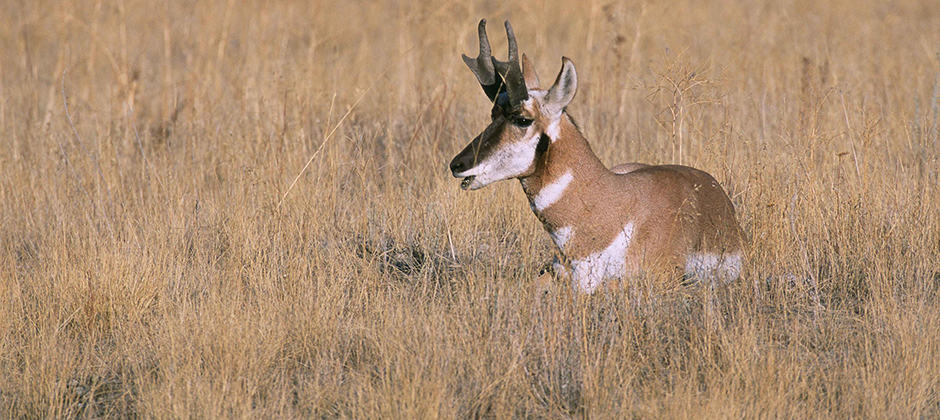Share this article
JWM: Museums hold secrets of California’s vanished pronghorn
One hundred years ago, pronghorn roamed the Sonoran Desert in what is now the borderlands between Southern California and northern Baja California in Mexico. Today, they are gone from the wild, and as managers look at reintroducing the species, they face some challenging questions. Exactly which subspecies occupied the area? And would the same subspecies take to the landscape now that the environment has changed?
With native populations gone from the area since the 1930s, researchers went to one place they could still find a trace of them — the museum — and found some surprises.
“It was clear using museum samples was the way to go about this,” said TWS member Melanie Carver, a U.S. Geological Survey geneticist at the Arizona Cooperative Fish and Wildlife Unit at the University of Arizona and a co-author on the study published in the Journal of Wildlife Management.
Researchers set about finding whatever remnants they could of the pronghorn that once occupied the area. “That began with me collecting as many museum specimens as I could,” said lead author Erin Hahn, who performed the research as a doctoral candidate at the University of Arizona.
Hahn gathered century-old samples from pronghorn that once roamed Southern California and northern Baja California. In one case, researchers tried to to piece together the animals’ genetics using DNA from an old bone found in a fire. “Not every sample worked,” Culver said, “which is typical of museum samples. You don’t get 100% success.”
In northern Baja California, they found, historical pronghorn populations shared the most in common with the endangered Peninsular subspecies (Antilocapra americana peninsularis). That surprised the researchers, since its historical range had been thought to stop south of there.
The Southern California specimens most closely resembled American pronghorn (A. a. americana), like those that still roam across much of the American West. But reintroducing them to California may not be so simple, researchers warned. Those extinct pronghorn probably had unique genetic adaptations to California’s hot, dry desert — adaptations that may now be lost. Today’s American pronghorn occupy colder, high-elevation grasslands, not low-elevation deserts, and today’s Sonoran Desert is hotter and drier than it was 100 years ago.
“Part of the reason there aren’t pronghorn there anymore is because the environment has changed,” Hahn said.
Instead of reintroducing American pronghorn, the researchers suggested, managers might want to focus their efforts on modern Sonoran pronghorn (A. a. sonoriensis), another endangered subspecies surviving thanks to captive breeding programs.
“The Sonoran subspecies has developed severe drought tolerance,” Culver said. “They can go a year without rainfall and be just fine.”
Although they are less related to the historical inhabitants, researchers concluded, modern Sonoran pronghorn populations occur in habitat similar to today’s California deserts.
“They may be more ecologically suited to the area,” Hahn said.
Now a postdoctoral fellow at the Commonwealth Scientific and Industrial Research Organisation, Australia’s national research lab, Hahn is developing new genetic techniques to better extract data from museum specimens and conserve endangered species — efforts that seem increasingly important as massive bushfires take a toll on Australian wildlife.
“We just see the clock ticking on so many species,” she said. “If we’re able to tap into historical knowledge and look at species that have fared well or haven’t, we can really make a difference in preserving biodiversity.”
This article features research that was published in a TWS peer-reviewed journal. Individual online access to all TWS journal articles is a benefit of membership. Join TWS now to read the latest in wildlife research.
Header Image: The Peninsular pronghorn is most genetically similar to the pronghorn that once roamed the northern edge of Baja California. ©Ryan Haggerty/USFWS








